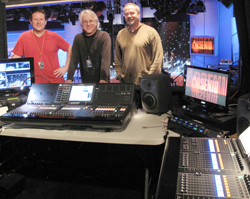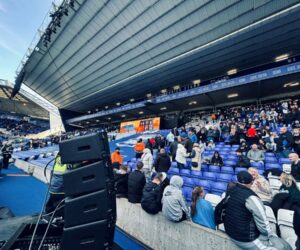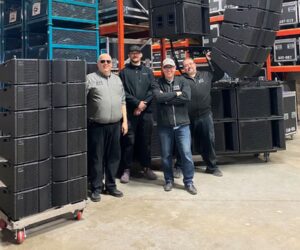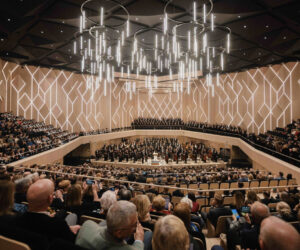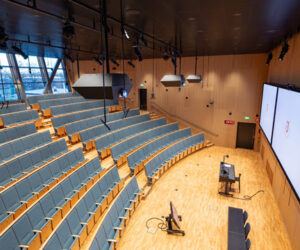The Arsenio Hall Show premiered in September 2013 and features a mix of comedy, music and celebrity guests, adding a new perspective to the late-night scene.
Hosted by comedian and actor Arsenio Hall, the daily, one-hour nationally syndicated late-night talk show is anchored by the Tribune Broadcasting Station Group and produced by CBS Television Distribution.
Peter Baird, the sound system designer as well as the music mixer for The Arsenio Hall Show, along with the production mixer, house and monitor engineers, chose five Yamaha CL Digital Audio Consoles and six Rio3224-D input/output boxes to kick off the season.
Two CL5s and one CL3 are used at front of house with two CL5s at the monitor mix position.
“When production mixer Ish Garcia asked me to come in as the show’s music mixer, we spent some time together strategizing about what an ideal system would look like,” states Baird.
“We knew the show would be very music-heavy and wanted the system requirements to check four main boxes: 1) 160 inputs available to split between the house band, guest artists, and production, 2) tight integration and future-proofing, 3) stability and reasonable immunity from buzzes, hums, and grounding issues, and 4) incontestably great sound.”
Baird said he did a lot of research and was surprised to find that most major professional audio manufacturers still think in terms of single consoles with local input/output resources rather than integrated, networked systems.
“It’s true that some manufacturers have implemented various modes of moving audio around including MADI and EtherSound, but only Yamaha had really perfected the relationship between separate console operators using shared resources.
“And, the more I read about Dante, the more I thought a large Dante network might be the best answer for us.”
Garcia and Baird have been through the audio selection process before, having been the mixing team on Lopez Tonight.
“In a project like The Arsenio Hall Show, the audio team needs to be able to move inputs and outputs around quickly and flexibly to deal with whatever the production team might throw at us,” explains Baird. “For example, we need to be able to quickly integrate any number of players suddenly showing up to sit in with the house band, while at the same time keeping the whole system as simple and understandable as possible for the operators.
“Yamaha’s incremental approach to console operations and CentraLogic meant that our FOH and Monitor Mixers, James Young and Greg Keslake, were already largely familiar with the console surface conventions from the very first day.”
Baird added that the economics of networked audio are not insignificant.
“Traditionally a show like The Arsenio Hall Show would have at least three 56 pair of three-way transformer splitters with all of the associated interconnect copper between them, and in some cases, hundreds and hundreds of feet. Those 504 outputs (3 x 56 x 3) would feed separate consoles, with each output requiring a separate head amp.
“As mixers, we know that the best-sounding consoles are the ones with the best head amps, and a console with 64 top-drawer head amps costs more money than one with 64 mediocre head amps. But a networked system only needs one really great head amp per channel no matter how many consoles it’s connected to.
“With the CL series having only 8 head amps on board, Yamaha was able to spend time and money making the console as ergonomically correct as possible rather than trying to re-engineer head amp design to fit a small footprint.
“Also, in the case of Dante, local interconnects are on Cat 6 cable, with point-to-point connections on fiber, a monumental savings over the same capabilities in copper. And to clarify, the head amps in the Rio3224-D input/output box are spectacular.
“They are clear and detailed, yet with great body, warmth, and musicality; a great foundation for a system in a critical installation like The Arsenio Hall Show.”


